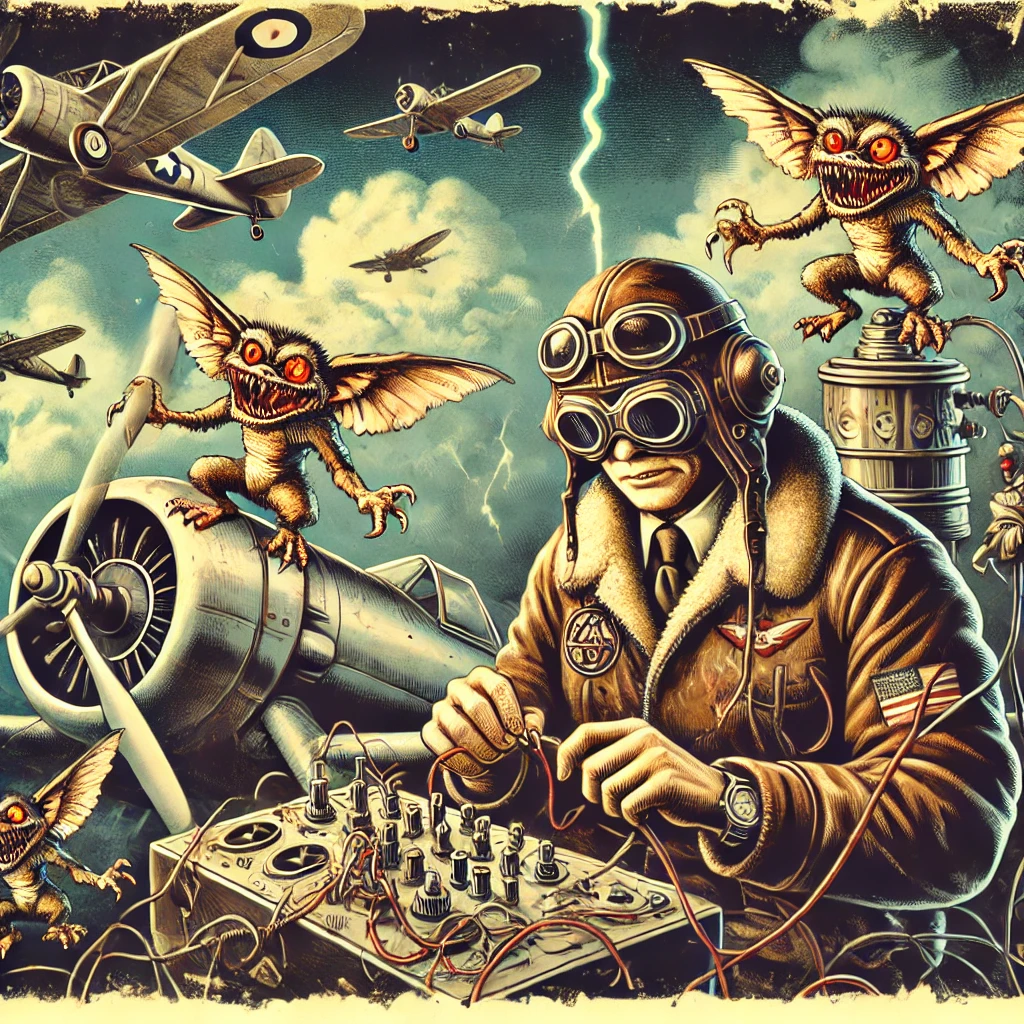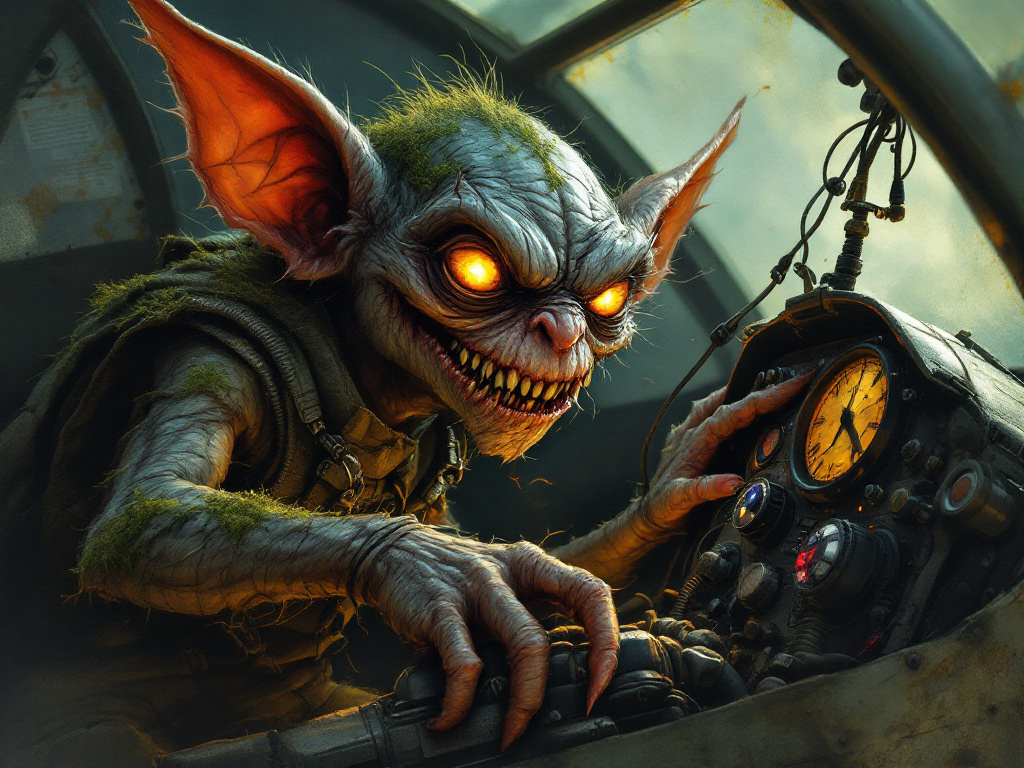The term Gremlin evokes images of mischievous, goblin-like creatures wreaking havoc on machinery and electronics. But their legend dates back to World War II, where aviation folklore turned these creatures into scapegoats for mysterious malfunctions. Over time, the Gremlins evolved from an insider military joke to horror icons in Hollywood cinema.
The Origins of the Gremlin Myth
During World War II, pilots of the Royal Air Force (RAF) reported encounters with small, malevolent beings—Gremlins—that were said to sabotage aircraft mid-flight. These creatures were often described as having sharp claws, glowing eyes, and sinister grins, creeping into cockpits to tamper with controls and fuel lines.
The Gremlin myth served multiple purposes. It was a way for stressed pilots to rationalize inexplicable technical failures, but it also added a sense of camaraderie, turning fear into humor. Some historians believe that early aviation mishaps—caused by extreme altitudes, freezing temperatures, or mechanical flaws—fueled these supernatural explanations.

artwork of gremlins sabotaging a fighter plane
Roald Dahl and the Rise of Gremlins in Literature
The legend of the Gremlins would have remained a niche military folklore had it not been for Roald Dahl, a former RAF pilot. In 1943, he published The Gremlins, a book that brought these creatures to a broader audience.
In Dahl’s version, Gremlins initially sabotaged British planes as revenge for the destruction of their forest homes. However, they later allied with pilots to fight the Nazis. This story was even considered for an animated adaptation by Walt Disney, though it never materialized.
Dahl’s book played a crucial role in transitioning Gremlins from a wartime legend to a pop culture phenomenon, ensuring their place in modern storytelling.
The Gremlins’ Hollywood Transformation
The Gremlins truly exploded into pop culture with the 1984 film Gremlins, directed by Joe Dante and produced by Steven Spielberg. Unlike the RAF’s troublesome but invisible creatures, these Gremlins took on a more physical and terrifying form.
The film introduced Mogwai, a cute and mysterious creature that, when mishandled, spawns a horde of destructive Gremlins. The movie combined horror and comedy, balancing genuine frights with slapstick chaos. Originally, the script was much darker, with more gore and violence, but Spielberg influenced the final version to be more commercially viable.
Gremlins became a cult classic, defining 1980s horror-comedy aesthetics and influencing future monster movies.
The Gremlins in Modern Culture
Today, Gremlins remain deeply embedded in pop culture. From their wartime origins to their Hollywood reinvention, they’ve appeared in cartoons, video games, and comic books. The term “Gremlin” is still used metaphorically to describe tech glitches and mechanical failures, keeping their mischievous legacy alive.
The enduring appeal of Gremlins lies in their ability to tap into our fear of the unknown, particularly regarding technology. Whether lurking in wartime aircraft or rampaging through neon-lit cities, these creatures symbolize chaos, mystery, and the darker side of innovation.
The Gremlin myth started as a humorous way to cope with wartime anxieties but evolved into a pop culture phenomenon. From WWII aviation folklore to the big screen, these creatures continue to haunt and entertain, proving that even the smallest monsters can leave a lasting impact.
Sources








Leave a Comment